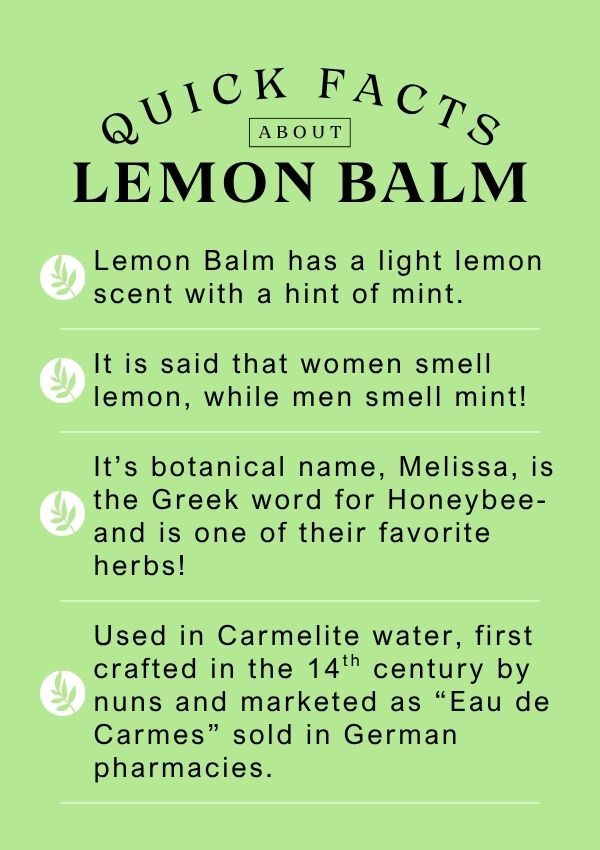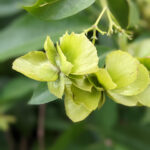Lemon Balm, Sweet Balm, Bee Herb, Balm Mint
Botanical Family : Lamiaceae
Native to : Europe, Asia, Mediterranean
Researched by : Shawn Helm


Botanical Family:
Labiatae or Lamiaceae; member of the mint family
Cultivation:
These perennial plants can live for 10 years. They may die back in the winter, but return in the spring. This easy to grow herb needs well drained, rich soil and full sun, although it will do well in shade too. Plant seeds uncovered for best germination, but it can be grown from layering, division or cuttings taken in spring.
It is susceptible to powdery mildew.
Native to south Central Europe, the Mediterranean, Central Asia, and Iran, it has naturalized worldwide and grows well in temperate climates.
During high stress events (too dry, wet, etc.), cut it back to the ground and it will soon recover.
Folklore & Traditional Uses:
This plant has been a favorite for 2,000 years. The Roman Scholar Pliny noted bees preferred Lemon Balm to other plants.
Lemon Balm was used as a mild form of Valium in past centuries.
Many old recipes called for it, and it was often added to wine. Thomas Jefferson grew Lemon Balm at Monticello. It was used both as a medicine and a flavoring.
It has also been used as an insect repellent. Thrown onto a fire or rubbed into a wooden kitchen table, it is said to repel bugs.
Modern & Medicinal Uses:
Lemon Balm is available commercially, dried as tea, although fresh leaves have more aroma.
The leaves can be rubbed into wooden furniture as a furniture polish.
It has lost popularity as a medicine, although you will find it in many creams, salves, and scrubs mixed with other herbs.
Use it in potpourri, in cooking, as a houseplant, in bouquets, and in finger bowls at a fancy dinner.
Recipes:
Lemon Balm Tea
Use stems and leaves and boil, fresh or dried. Strain and stew fresh or dried fruit in the tea. It will be strong.
Stuff whole sprigs of Lemon Balm into the cavity of whole fish before grilling or baking. Remove before eating.
Chop fresh leaves and add to orange marmalade.
Add whole chopped fresh leaves to green or fruit salads, stuffings for poultry, marinated vegetables, chicken salad. It pairs well with freshly ground black pepper, olives and beans.
You can use as a substitute for lemon verbena.
Other Uses
- Stuff whole sprigs of Lemon Balm into the cavity of whole fish before grilling or baking. Remove before eating.
- Chop fresh leaves and add to orange marmalade.
- Add whole chopped fresh leaves to green or fruit salads, stuffings for poultry, marinated vegetables, chicken salad. It pairs well with freshly ground black pepper, olives and beans.
- You can use as a substitute for lemon verbena.
References:
Carr, Anna, et al., “Rodale’s Illustrated Encyclopedia of Herbs,” Emmaus, PA, Rodale Press, 1987, Book.
Hill, Madeline and Barclay, Gwen, with Hardy, Jean, “Southern Herb Growing,” Fredericksburg, TX, Shearer Publishing, 1987.
Various sources, “Lemon Balm,” en.wikipedia.org, May 29, 2025, Accessed on May 30, 2025.
Return to Europe Region
Return to Pharmacy Garden









